
Murray Hunter
Guest Article: The Khao Nam Khang Historical Tunnel of Piyamit 5 Friendship Village
Carolyn Khor
JUN 12, 2024
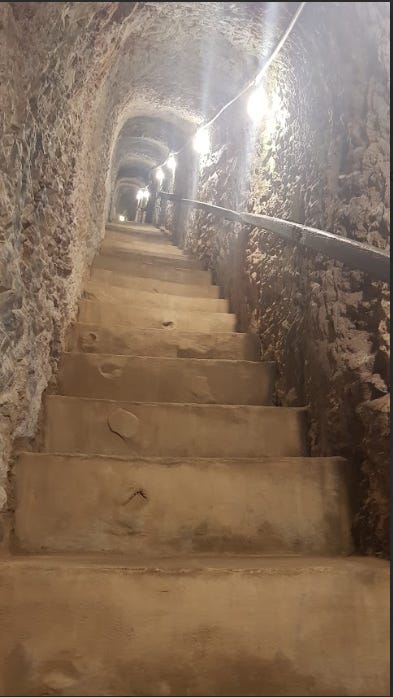
Not many people know of the Khao Nam Khang Historical Tunnel, which is situated high among the hills in southern Thailand, within the Khao Nam Khang National Park.
This tunnel complex, touted as the longest surviving man-made tunnel in Thailand, used to serve as a hideout and operational base for armed members from the 8th Regiment of the Communist Party of Malaya (CPM) until they ceased their activities on 13 March 1987 through an agreement made with the Thai government. This was followed by the signing of the Hatyai Peace Agreement on 2 December 1989, a trilateral effort involving the Thai government, Malaysian government and the CPM, led by Chin Peng.
The tunnels bear witness to a turbulent past that has been transformed into a symbol of peace today, offering visitors a peek into the past in a unique blend of history and natural beauty. Other longer tunnels are inaccessible currently.
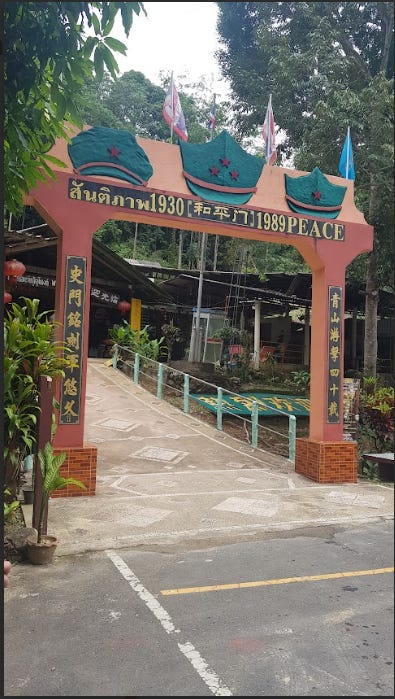
The Khao Nam Khang Historical Tunnel was built under the mountains in the 1970s when there was an influx of CPM recruits and volunteers seeking refuge from the Malaysian authorities. This was in contrast to the situation two decades prior, in the 1950s, when members of the CPM from Malaya were fleeing to South Thailand.
The tunnel complex, extending over 1 kilometre, was hand-carved by about 200 cadres supervised by their former commander, Huang Yijiang. It has sixteen entrances and exits and consists of three levels. The tunnel complex included living quarters, meeting rooms, an infirmary, and storage spaces for supplies and weapons, making it a self-sustaining fortress during its active days.
In addition to the tunnels, there were several facilities where the cadres engaged in various activities. These included spaces for conducting meetings, an outdoor kitchen, an outdoor infirmary, a basketball court for recreation, a rest area for relaxation, and even a special honeymoon hut designated for newly married couples. On top of that, there was an area marked as VIP toilets, with holes dug into the ground in the open-air area.
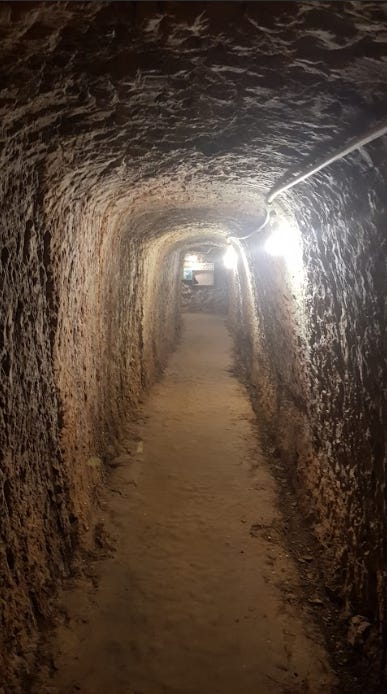
The tunnel's location in the dense jungle of Songkhla province provided the insurgents with a considerable tactical advantage. It was nearly impenetrable and undetectable by air, allowing the CPM to launch guerrilla operations while remaining hidden from the Thai and Malaysian joint military efforts.
Throughout the 1970s and 1980s, the Thai government and the communist insurgents were constantly locked in conflict. However, by the late 1980s, the conflict began to wane. The Thai government then initiated an amnesty programme, culminating in the Hatyai Peace Agreement, and many insurgents laid down their arms, leading to a gradual end to hostilities. The tunnel, once a symbol of rebellion, was then abandoned and left to nature.
In the decades following the end of the conflict, the Thai government and local communities have worked to transform the Khao Nam Khang Tunnel into a historical and educational site. Today, the Khao Nam Khang Tunnel has been transformed into a tourist location, drawing visitors interested in history and adventure. Visitors can explore the network of tunnels and see firsthand the conditions under which the insurgents lived and fought.
In its contemporary setting, Khao Nam Khang Tunnel represents not only a historical site but also a symbol of peace and reconciliation. The transformation from a place of conflict to a museum for education and tourism is evidence that people can overcome internal strife to build a peaceful future. As visitors walk through its dark corridors filled with echoes from the past, they also preserve a powerful symbol of hope for the future.
In the decades following the end of the conflict, the Thai government and local communities have worked to transform the Khao Nam Khang Tunnel into a historical and educational site. Today, the Khao Nam Khang Tunnel has been transformed into a tourist location, drawing visitors interested in history and adventure. Visitors can explore the network of tunnels and see firsthand the conditions under which the insurgents lived and fought.
In its contemporary setting, Khao Nam Khang Tunnel represents not only a historical site but also a symbol of peace and reconciliation. The transformation from a place of conflict to a museum for education and tourism is evidence that people can overcome internal strife to build a peaceful future. As visitors walk through its dark corridors filled with echoes from the past, they also preserve a powerful symbol of hope for the future.
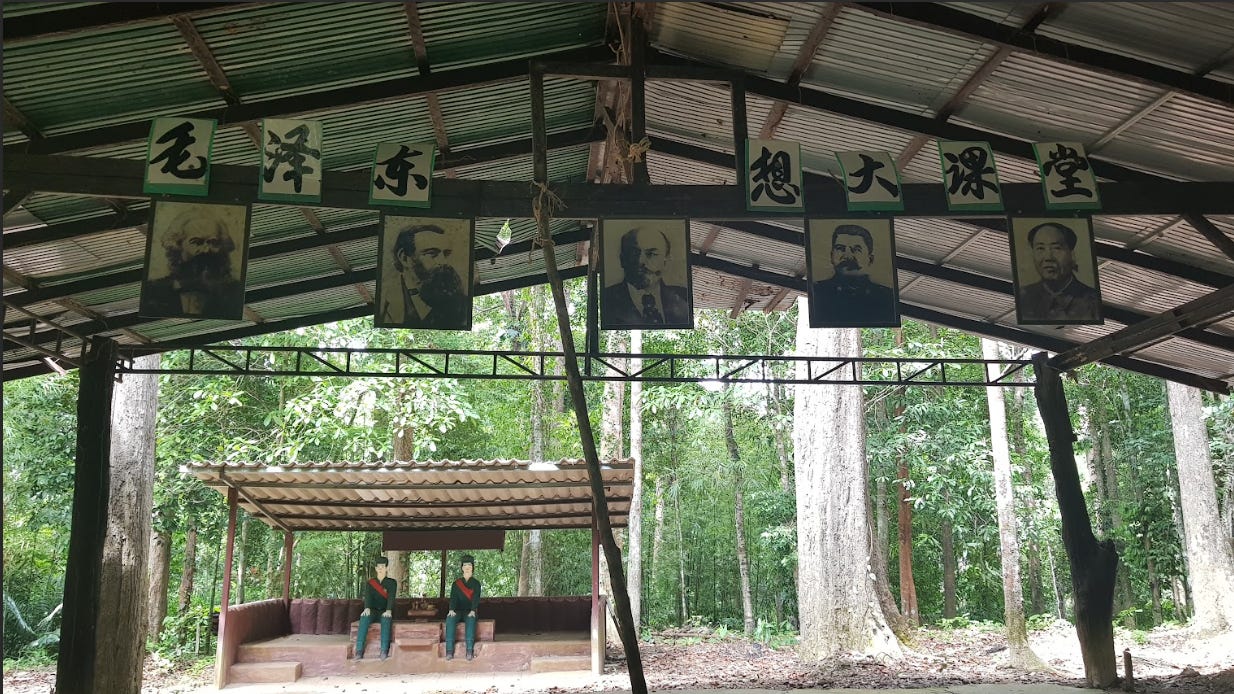
Mr Liang Yi Sing, the chief of Piyamit 5 Friendship Village, recounted how the cadres, both Thais and Malaysians, fought to liberate Malaysia. However, Mr Liang also mentioned that the CPM experienced internal conflicts during the years 1967 to 1970. “Many Thais who joined the CPM were also killed,” he said, referring to the purge that led to the 8th Regiment forming as a separate faction in response to the CPM’s kill order against those suspected of being moles.
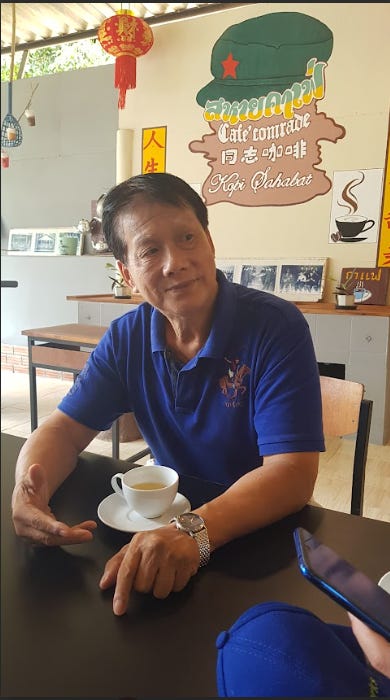
Mr Liang Yi Sing, the chief of Piyamit 5 Friendship Village.
“During that time, the communists were split into three factions: the 8th Regiment, the Central Faction, and the 12th Regiment. The 8th Regiment operated in Sadao and was later known as the Revolutionary Front Faction,” explained Mr Liang.
However, according to Dr Jason Ng Sze Chieh, who specialises in East and Southeast Asian history and lectures at the New Era University College, not all of the 12th Regiment were in disagreement with the Central Faction. “Some members of the 12th Regiment remained with the Central Faction. Only the 2nd Area Forces of the 12th Regiment broke away and continued their operations in Betong. They were later known as the Marxist-Leninist Faction.
“Later on, the Marxist-Leninist faction would also merge with the 8th Regiment,” he said.
The Central Faction or the original CPM and remnants of all other Regiments can also be found in parts of Betong and Narathiwat. “The 10th Regiment, a subordinate unit of the Central Faction comprising Malays, operated in Narathiwat,” he clarified.
To visit the tunnels at Khao Nam Khang, visitors are encouraged to hike up the Liang San 108 Staircase and descend using the tunnel stairway. However, the tunnels are unsuitable for young children and the elderly.
Tickets are priced at 100 Baht for Thai adults, 150 Baht for foreign adults and 70 Baht for all children.
The address for the Khao Nam Khang Historical Tunnel is Mu 1, Tambon Khlong Kwang, Songkhla, 90160, Thailand. It is about an hour’s drive away from the Bukit Kayu Hitam/Sadao border.
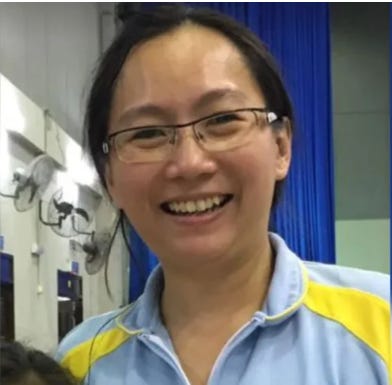
No comments:
Post a Comment